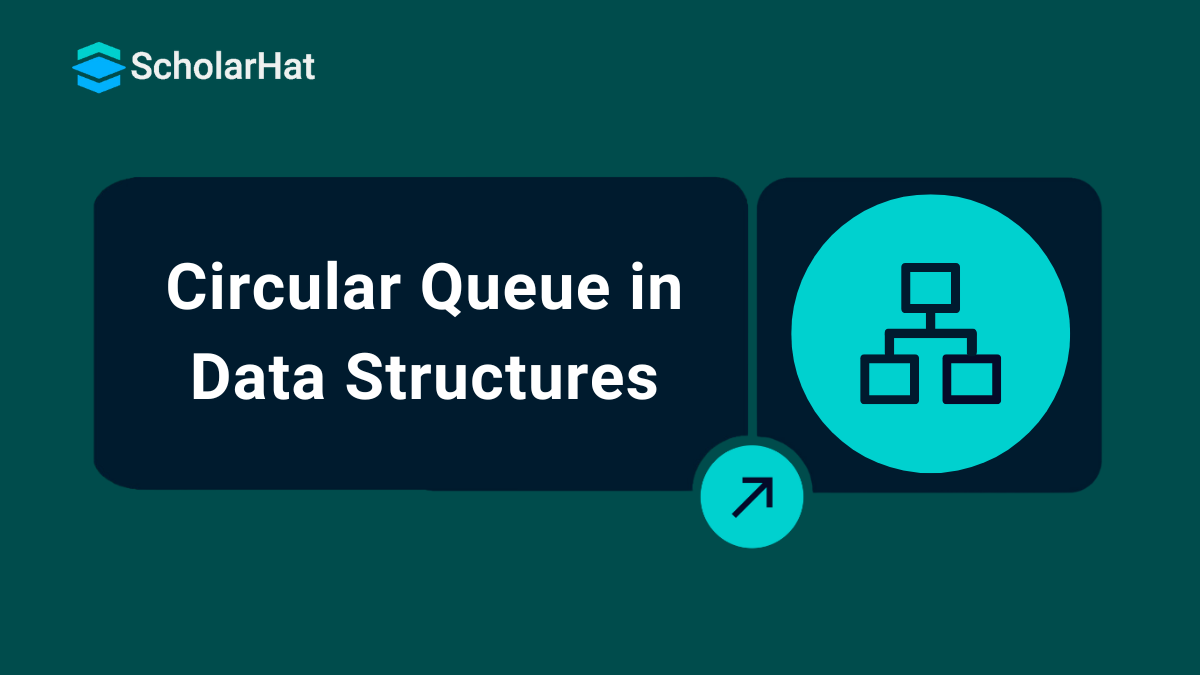18
AprImplementing Circular Queue in Data Structures
Introduction to Circular Queue
Circular queues are also referred to as buffers or ring buffers. It is a type of data structure that forms a loop connecting the end of the queue, to the beginning. This design helps overcome the constraints of a queue by utilizing space, which proves beneficial, in situations where a fixed-size buffer is needed.
In this Data Structures Tutorial, We will go through an introduction to Circular Queues in Data Structures.
To gain a deeper understanding of Circular Queues and other advanced topics, consider joining a Data Structures and Algorithms Course. This course is designed to provide you with expert knowledge, hands-on practice, and the skills needed to excel in technical interviews and solve real-world problems efficiently.
Explain Circular Queue
- The circular queue forms a circular link between the last node of a queue and its initial node,.
- It is essentially an expanded version of a linear queue that follows the First In First Out principle.
- As a result, it goes by the name Ring Buffer.
- The circular queue uses a circular link to overcome the memory-wasting issue, as seen in the below image.
Working of Circular Queue
While the Circular Queue and Linear Queue both follow the First In First Out (FIFO) rule, the Circular Queue is unique in that it replicates a circle by connecting the final position to the first position.
1. Front
- The Operation Front is where the circular queue's initial element is found.
2. Rear
- This is where the circular queue's final element is found.
3. Enqueue()
- To add a new value to the circular queue, use the enQueue(value) function.
- This process starts at the end of the line.
4.Dequeue()
- To remove a value from the circular queue, use the deQueue() function.
- This procedure is carried out at the front of the line.
Representation of Circular Queue
The representation of a Circular Queue can be done through Arrays and a Linked List
1. Array
In a queue based on arrays the front and rear pointers are increased using the modulo operation to loop to the beginning of the array;
- front = (front + 1) % size
- rear = (rear + 1) % size
2. Linked List
- When it comes to a circular queue using a linked list the nodes are linked in a way that the next pointer of the last node refers back, to the first node creating a circular structure.
Implementing Queue Operations
1. Enqueue(x)
To enter (enqueue) a data element into a circular queue, you should do the following:
- Step 1: First, determine whether the queue is full (Front + 1% Maxsize + Rear).
- Step 2: An Overflow error will appear if the queue is full.
- Step 3: Set Front and Rear to 0 and see if the line is empty.
- Step 4: If the rear pointer is at the end of the queue and the front is not at the 0th index, then set the rear = 0 if Rear = Maxsize - 1 & Front!= 0.
- Step 5: If not, set Rear to equal (Rear + 1)% Maxsize.
- Step 6: Place the element in the queue (Queue[Rear] = x) in step six.
- Step 7: Exit.
You will now investigate the Enqueue() function by examining several insertion scenarios in the circular queue:
2. Dequeue()
The actions listed below should be taken in order to remove data from a circular queue:
Implementing Circular Queue with an Array
class CircularQueue:
def __init__(self, size):
self.size = size
self.queue = [None] * size
self.front = self.rear = -1
def is_full(self):
return (self.rear + 1) % self.size == self.front
def is_empty(self):
return self.front == -1
def enqueue(self, value):
if self.is_full():
print("Queue is full")
else:
if self.front == -1:
self.front = 0
self.rear = (self.rear + 1) % self.size
self.queue[self.rear] = value
def dequeue(self):
if self.is_empty():
print("Queue is empty")
else:
value = self.queue[self.front]
if self.front == self.rear:
self.front = self.rear = -1
else:
self.front = (self.front + 1) % self.size
return valueImplementing a Circular Queue with a Linked List
class Node:
def __init__(self, data):
self.data = data
self.next = None
class CircularQueue:
def __init__(self):
self.front = self.rear = None
def is_empty(self):
return self.front is None
def enqueue(self, value):
new_node = Node(value)
if self.is_empty():
self.front = self.rear = new_node
self.rear.next = self.front
else:
self.rear.next = new_node
self.rear = new_node
self.rear.next = self.front
def dequeue(self):
if self.is_empty():
print("Queue is empty")
else:
value = self.front.data
if self.front == self.rear:
self.front = self.rear = None
else:
self.front = self.front.next
self.rear.next = self.front
return value
Circular Queues Applications
1. Operating Systems' Memory Management
2. Algorithm of CPU Scheduling
3. Spooling Systems for Printers
4. Networking Traffic Management
Conclusion
| Similar Articles on Data Structures |
| Queue in Data Structures |
| Priority Queue in Data Structures |
| AVL Tree in Data Structures |
| Trees in Data Structures |
| Interview Preparation |
| DSA Interview Questions and Answers (Freshers to Experienced) |
FAQs
- It provides a quick way to store FIFO data with a maximum size.
- Efficient utilization of the memory.
- Doesn't use dynamic memory.
- Simple implementation.
- All operations occur in O(1) constant time.








